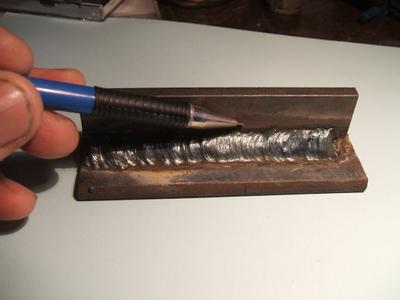
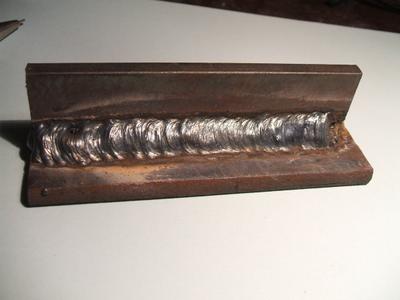
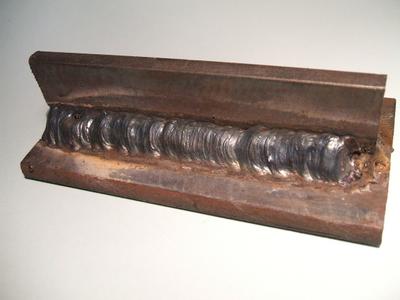
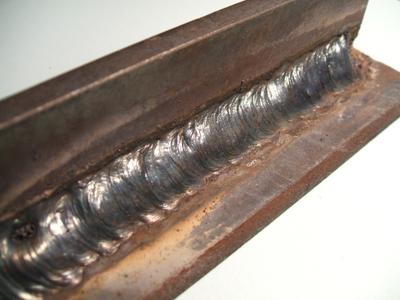
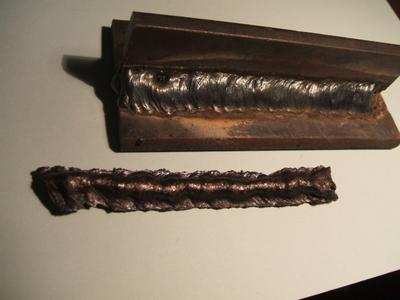
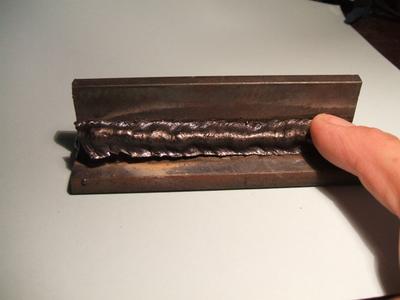
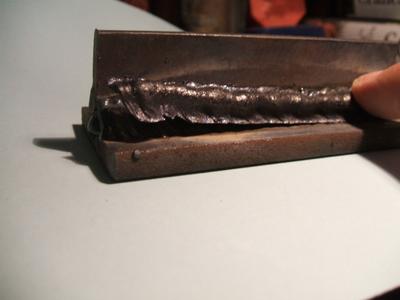
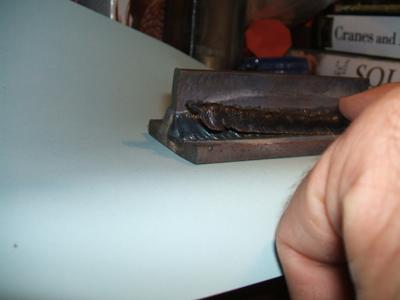
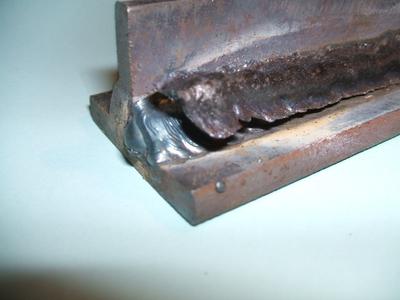
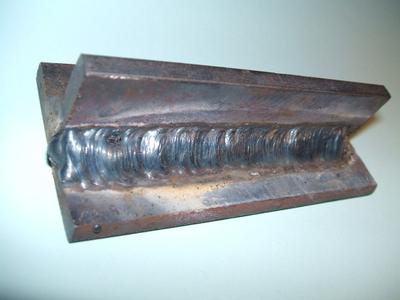
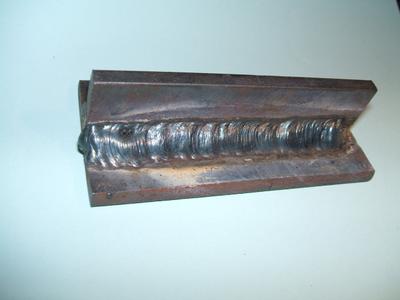
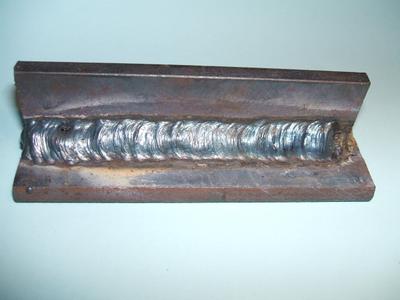
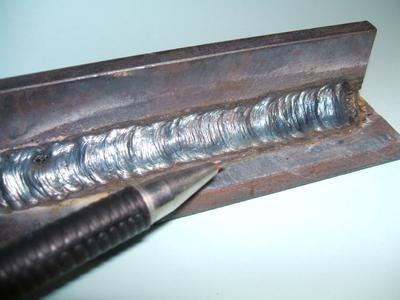
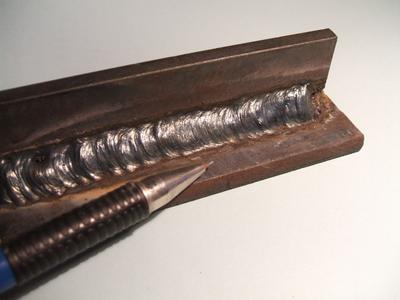
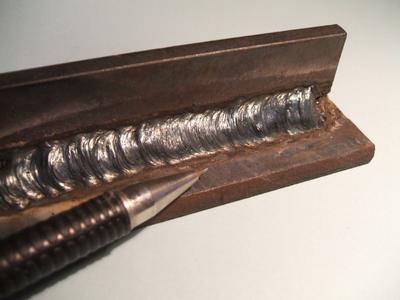
Feeling quite excited because after several weeks of work at college trying to get good vertical-up T-fillet SMA ("stick") welds, have at last got one which I am sure can be developed to consistently give a good T-fillet weld.
That is to say - I have found conditions which I know will give consistent good results when I refine my welding skills to match. In the photos, you will see the weld needs development. There is even a slag hole near the start! But I can see the path to success in the good section(s) of this weld where I have run the condition as I intend.
In summary - I found this condition at a lower Amperage condition than I had previously been trying.
Here are all the pictures I took as I "bracketed" the subject.
In all cases base-to-top is left-to-right in the photos.















Some of these pictures show that the welding slag is self-peeling (the slag progressively detached itself from the weld as the weld progressed, left holding on only at the end to the last-formed finish of the run). Self-peeling slag on a vertical-up is usually a very promising sign indeed that you are converging in on a good welding condition.
There are stop / starts in all these pictures.
Here are my "selected" photos from the above:
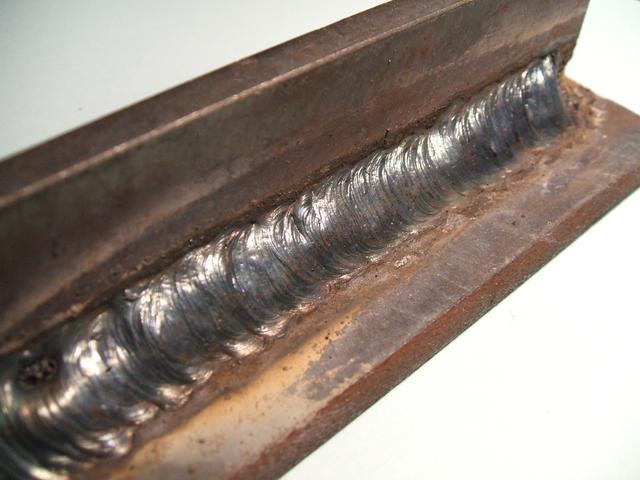
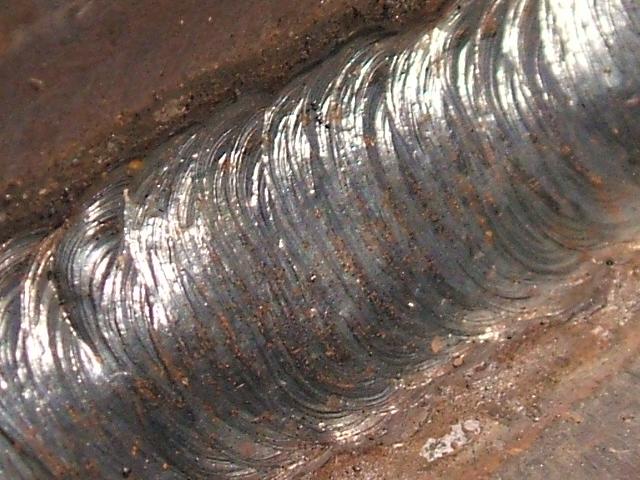
With stick welding, the only machine control you have is the current setting. Stick-welding uses a constant-current power source (some inverters also have a control called "dig" but this is a tuning on the dynamic response to changing current through changing the arc-length, so it is still about current).
The current used here is 73A - which puts my college conditions into close agreement with the 75A which I find is right using my own inverter welding machine for vertical-up welding. This is comparing to the previous 80A current which has been the basis of my welding development for the previous several weeks at college.
Here is a detailed summary of conditions:
| Current | 73A |
| Polarity | DCEN |
| Root: | 2.5mm dia 6013 "RC" (rutile-cellulose) |
| Cap: | 3.2mm dia 6013 "R" (straight rutile) |
| Joint type | T-fillet |
| Thickness | 6mm plate |
| Weld direction | vertical-up |
| Welding process | SMA / "stick" |
Setting current on welding machine without current scale or ammeter: a flat bead-on-plate weld with 2.5mm dia rod with these conditions will be very self-peeling with a bead which is smooth but quite tall - about semi-circular in cross-section.
Detail description of weld runs (root and cap):
Root run:
| Slope | ~5deg below horizontal |
| Tilt | 45deg off both plates (aim into fillet corner) |
| Progression | Constant upward progression speed |
| Rod manipulation | Switching left-to-right about one rod dia.(*) to either side of fillet corner line at about 1.5Hz [times per second for a complete cycle](* one edge of welding rod wire core never goes beyond alignment with fillet corner) |
Capping run:
| Slope | ~10deg to 15deg upwards (= below horizontal) |
| Tilt | 45deg off both plates (aim into fillet corner) |
| Progression | Stationary at stop-points, building up weld pools at each root-run to plate boundary - obtaining progression by upward step on switching sides |
| Rod manipulation | "Zig-Zag", switching side from one root-run to plate boundary to the opposite one, climbing desired progression on each switch. Switch rate to be finalised, but is controllable in range 1Hz to 0.5Hz (higher 1Hz freq seems more promising) |
Additional point noted about capping run:
On this lower power (Amps) setting and at higher zig-zag rate, the
capping run is very sensitive to keeping the zig-zag pattern very
evenly aligned about the horizontal datum - otherwise you get slag
holes. But if you keep good alignment to the horizontal datum,
slag-shedding is very fast, enabling high zig-zag rates while
observability of the forming fillet is very good, and the build-up of
the climbing fillet is in very small increments, giving a very smooth
even fillet surface and profile.
The pictures show this outcome. Yes, there are obvious needs to improvement. There is even the slag pocket there. But the point is - the fillet size is right, its shape is right - a flat 45deg mitre, it's smooth, there is no undercut while there is clear "wetting" of fillet to plate, etc, etc. This is the first time I have seen a weld and thought "I can develop this to a 'coded weld' standard".
Detail observation of effect of dropping to a lower current in this
vertical-up fillet-weld:
Better "pen" (fusion / penetration), as can "ride" the arc more
definitely on top of the weld pool searing its top surface but more
importantly burning into the back surface - into the plate on the root
run or the root-run-to-plate junction for the weaved cap. And
"slag-shedding" just as good if not better - find can oscillate in the
horizontal "left-right" plane much quicker with these conditions for
reasons I don't understand - it would have to be something like the
slag-shedding occurs as the weld-pool freezes and running at lower
heat that occurs sooner, clearing the way for a faster return - and
therefore a higher zig-zag rate.
Also in this session at college, found capping with 2.5dia rod much easier, leading to a perfectly formed smaller fillet suitable for double-sided 6mm T-fillet or single-sided in about 4mm plate.
What I now have to do is practice this condition and see if I can refine my technique so that the weld comes out as I intend every time.
R D Smith, 14 June 2008